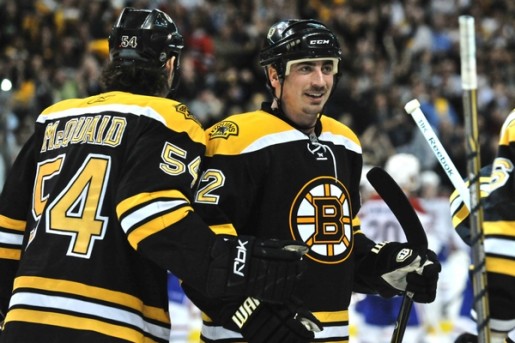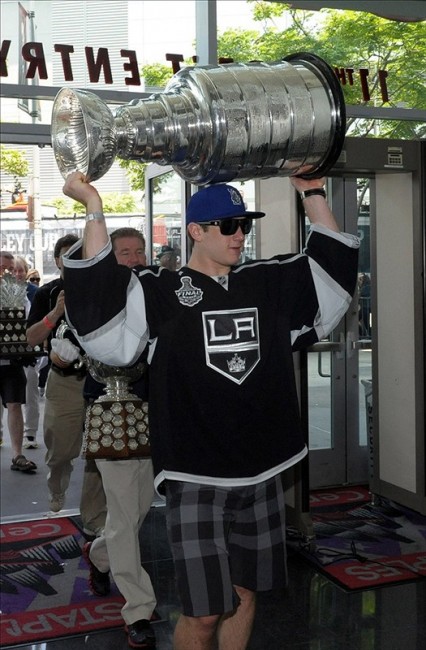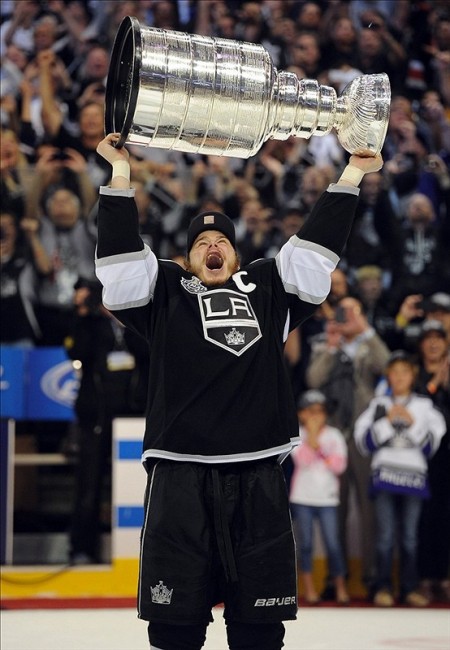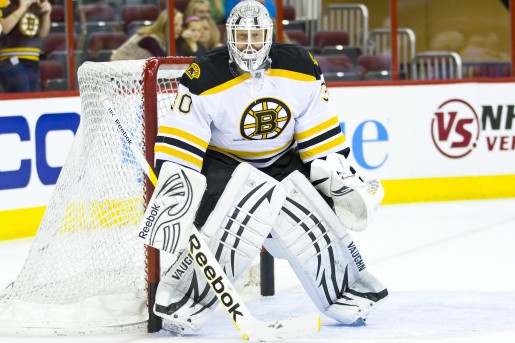Since 1927, the NHL’s best teams have competed for the right to call themselves Stanley Cup Champions. Today, there are 30 teams with the same goal, and only one winner. To be that one team, just about every break has to go your way. It would be an extreme understatement to say that this is a daunting challenge. That goal, however, pales in comparison to the mission facing the defending champs. Enjoy the spoils of victory, but arrive in September ready to repeat.
Since the competition for the Stanley Cup became exclusive to NHL teams, only 15 organizations have managed to win consecutive championships. The last team to accomplish this feat was the Detroit Red Wings, winning the Stanley Cup in 1997 and 1998. Now that the salary cap era is upon us, those same Detroit Red Wings will go down in history as the last team to repeat as Stanley Cup Champions.
Salary Cap

In the past, teams were able to spend as much as they pleased to ice the best team possible. They could utilize their success on the ice and their financial prowess to attract the best players available, making their championship team even stronger. These days, teams rarely achieve success on the ice without liquidating their financial flexibility. Since the salary cap was established, only one team has made it back to the Stanley Cup Finals the year after winning, that team was the 2009 Detroit Red Wings. They were an outlier, as most teams find themselves locked into their existing roster, or worse, over the cap. Without the ability to add to your team, it is very difficult to progress from season to season, even more so when you are losing pieces of the team that got you to the Stanley Cup in the first place. With free agency out of the question, the best chance for these teams to add pieces to their roster is the NHL trade deadline.
Trade Deadline Prices

In the salary cap era, the league has achieved a greater level of parity. This means the competition across the league has improved, but it also means that more teams are in contention for a playoff spot late into the season. With more teams in the playoff hunt, there is far less supply and far more demand at the trade deadline. As a result, the price tag is much higher for the players that are available. Now teams face mortgaging their future by giving up valuable assets (i.e. prospects, draft picks) for two or three month rental. If your team wins the cup, you are likely faced with the inability to re-sign your trade deadline acquisition, setting your team back almost immediately following the conclusion of the Finals. If you don’t make the trade, the teams around you improve in the short-term, and make the road to the Stanley Cup that much more challenging.
Short Summer

After an 82 game regular season and four rounds of playoffs, the shortened summer, full of championship celebrations, can be devastating. The reduced break limits the amount of rest, recovery, and training players can fit in as they prepare for the upcoming season. All playoff teams suffer from this to varying degrees, but the Stanley Cup Champions play the farthest into the summer. Once their successful campaign is complete, they still find themselves far away from their vacation. As champions, the team does quite a bit of traveling with the Stanley Cup, making appearances everywhere from charity events to morning talk shows. Once the team separates for the summer, each player then spends a day or two with the Stanley Cup, celebrating individually. By the time they get to rest, it’s time to start preparing for training camp. Without a full summer to recover and train, players are less likely to be as productive and more likely to sustain injuries throughout the season.
Injuries

Without the ability to bring in reinforcements during the off-season, nothing can derail championship aspirations like injuries. Teams are allowed to recoup some of the cap space that is dedicated to injured players, but that rule has some limitations. First, the player must be out for at least 30 days. Second, the cap savings are pro-rated, meaning that if the player misses 10% of the season, the player’s cap hit is essentially reduced by 10% for the given season. While that certainly helps, teams that are close to the cap ceiling are still hampered. If a first line winger is hurt for two months, the team can recover two months’ worth of cap space, but the challenge of finding a suitable replacement for a fraction of the cost is extremely difficult. In the case of a defending Stanley Cup champion, if the team finds a replacement using the freed up cap space, they will eventually be faced with a roster crunch. They can either attempt to get rid of the replacement that they have likely given up assets to acquire, or be forced to trade players that helped get your team to the promise land. Regardless of which decision the team makes, they will be exposed to a level of risk.
Luck

To win a Stanley Cup Championship, a team will undoubtedly need to be the beneficiary of good health and some favorable bounces. While skill and chemistry can carry your team through the regular season and into the playoffs, to win four consecutive best-of-seven series, you need to have luck on your side. To make the playoffs in back-to-back years, and then go on to win eight consecutive playoff series, you can’t afford anything short of tremendous luck. A bad break in overtime can cost you, not only the game, but a series. That’s only the luck that teams need within individual games. Between the luck needed to stay healthy and the luck needed to avoid individual slumps, it is near impossible to win back-to-back Stanley Cups.
Since the Red Wings celebrated their second consecutive Stanley Cup Championship in 1998, the NHL has welcomed three new teams into the league. The addition of these teams has stiffened the competition league-wide, making an already daunting task, even more challenging. As if that wasn’t enough of an obstacle, following the lockout in 2005, the league instituted a hard salary cap, introducing an entire set of new rules. It has never been easy to repeat as Stanley Cup Champions, but now, it has become so difficult that it will never happen again.